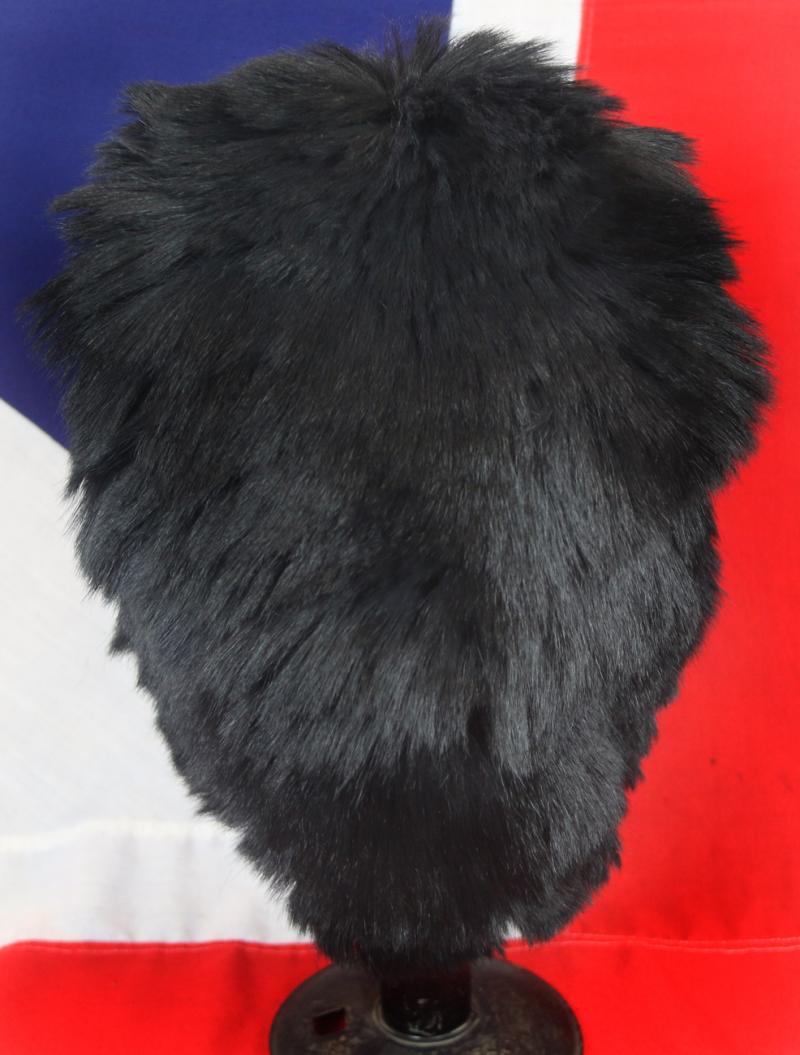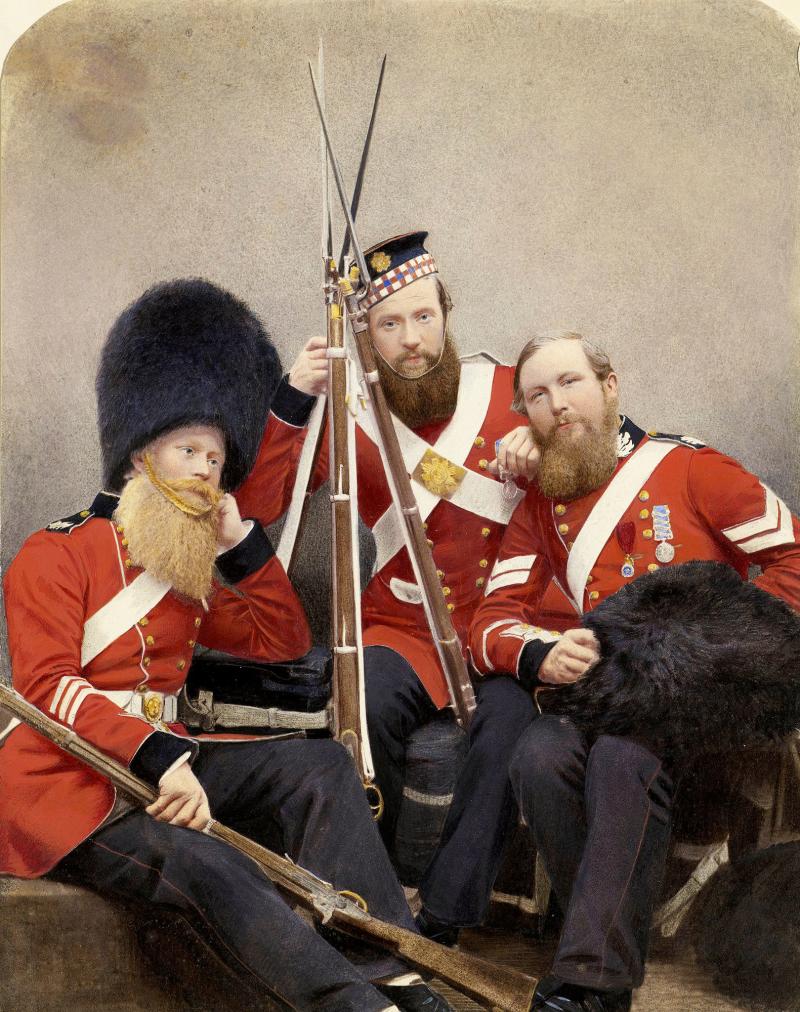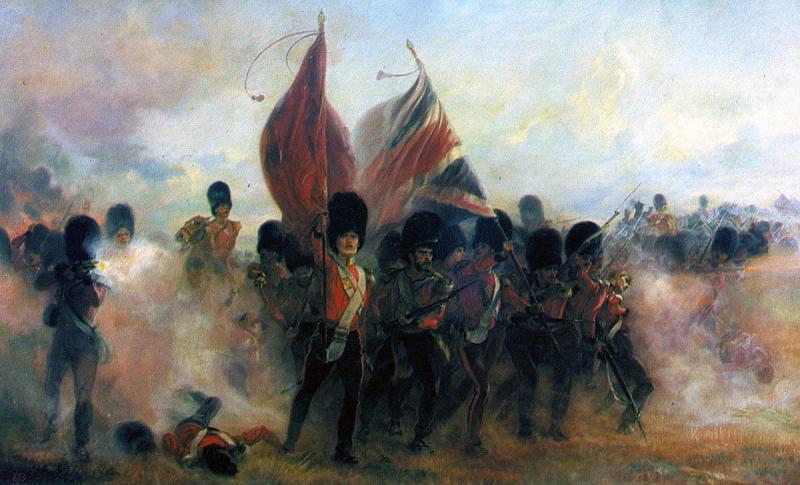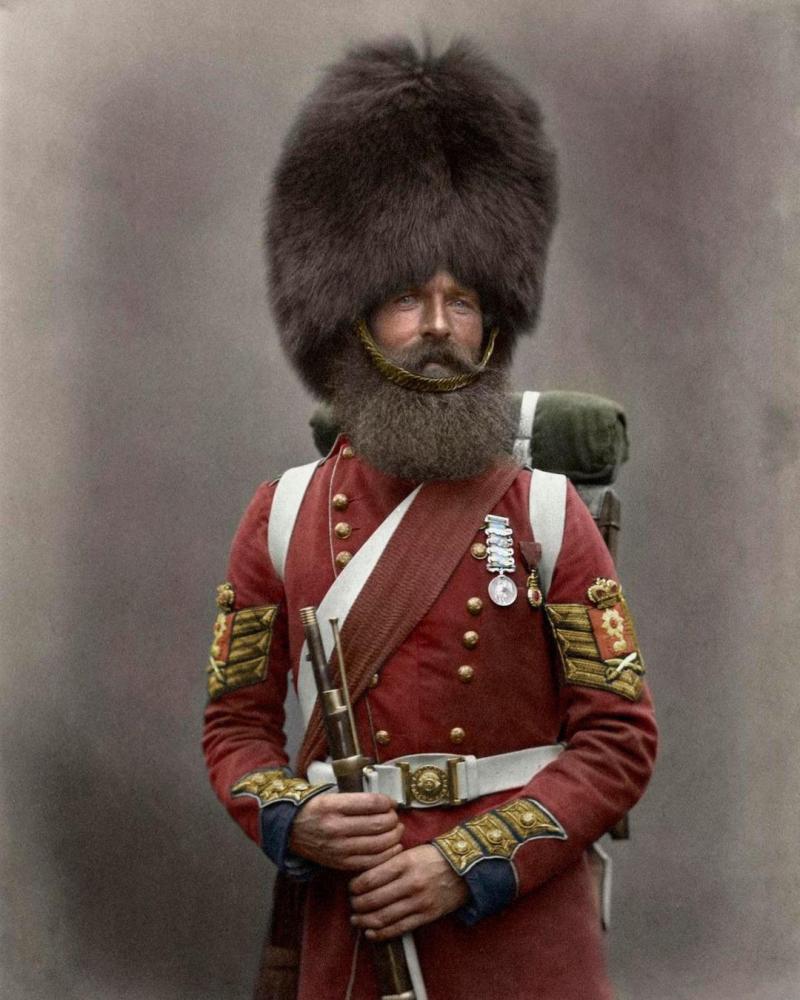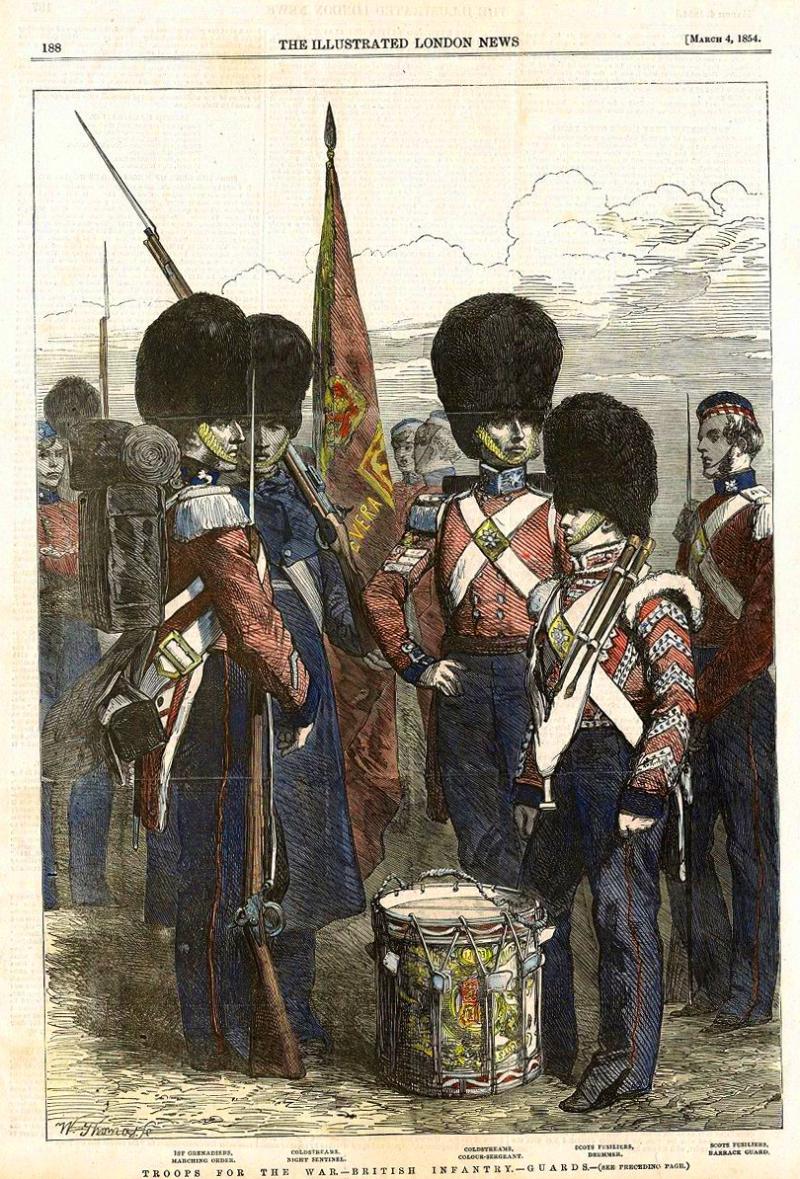A Very, Very Rare Scots Fusilier Guards Officer's Bearskin Cap 1854. Used at Sebastopol and Alm. The Only Other 'Foldable' Bearskin, Surviving From The Crimean War, That We Know Of, Can Be Seen in The Guards Museum
In overall very good condition, the interior is lined with a leather cap, stitched to the skin, as could be usual for the Crimean bearskin, so the caps could be transported flat one supposes, and it also has the officer's velvet band partially intact. It has no hackle mount externally, which is correct for the Scots Fusilier Guards bearskins, as they wore no hackle, unlike the Grenadiers, and Coldstream Guards. This is only the second 1850's example used in the Crimea we have seen outside of the Guards Museum
.
This is the bearskin headdress of an 1850's officer of the Scots Fusilier Guards, one of the most famous regiments of infantry in the British Army. This celebrated item, still worn by the Guards Division on ceremonial duties, has its origins in the Battle of Waterloo, where the 1st Foot Guards of Wellington’s army fought against the French Imperial Guard, who wore bearskin caps. It was during the reign of King George IV that the Guard uniforms were changed, along with the Guard Regiments themselves. The scarlet coatee was introduced, with gray or white trousers and in 1832 the bearskin cap became the official headdress of all three guards regiments, thus creating the ceremonial uniform that essentially remains in use today.
In the Crimean war the bearskin was reduced in height and the cap's pelt could be attached to a leather cap, as is this one, and not mounted on a frame of willow or rattan, one such bearskin mounted is in the Guards Museum London
In the Crimean war they were still a combat helmet, classified as a bearskin cap. Sometime after the Crimea the bearskin was only in use by the guards, and fusiliers as a dress cap, as it still is today.
The guards combat details follow below {in a brief resume} at the Battle of Alma, during the retreat and second attack.
By now, the 1st Division had finally crossed the river and the Russians in the greater redoubt saw approaching them the Guards' Brigade, with the Grenadier Guards on the right, the Scots Fusilier Guards in the centre, and the Coldstream Guards on the left. Out of sight on the far left was the Highland Brigade, commanded by Sir Colin Campbell. Campbell was irritated by the Guards' delay and ordered an immediate advance. A firm believer in the charge with bayonets, Campbell told his men not to fire their rifles until they were "within a yard of the Russians".
The Scots Fusiliers, by then ahead of the rest of the division, started to move uphill immediately, repeating the Light Division's mistake, which at that moment was running down from the redoubt, pursued by Russian infantry. The Light Division crashed into the advancing Scots Fusiliers with such force that the line was broken in many places. The Scots faltered, but emerged on the other side with only half their numbers and continued towards the great redoubt in a chaotic state. When they were 37 m (40 yd) from the redoubt, the Russians mounted a massive volley. The Scots Fusiliers were forced to retreat, stopping only when they reached the river.
The two other guards regiments filled the gap left by the Scots Fusiliers, but refused orders to charge with bayonets up the hill. Instead, the Grenadiers and the Coldstream formed into lines and started firing Minié volleys into the Russian advance parties. This stopped the Russians, and the Grenadiers and the Coldstream were soon able to close the gap between them; the Russians were again forced back into the redoubt. Vintage, replaced chinscales
Photos in the gallery of Hand-coloured photograph of three soldiers of the Scots Fusiliers Guards who served in the Crimean War. From right to left are Corporal Judd, Edward Temple and William Reynolds. They are all seated with Judd resting his bearskin on his lap and Temple holding one of the three rifles joint together pointing upwards.
Alongside this Crimean piece we also acquired a fabulous Crimean War pistol and an 1853 relic sword blade from the Charge of the Light Brigade.
Throughout the war Queen Victoria had taken an active interest in the welfare of the troops and on their return from the Crimea she met a number of the veterans at Buckingham Palace, Chatham Military Hospital and Aldershot Garrison. Following these meetings she commissioned a series of photographs of the veterans from the photographers Joseph Cundall and Robert Howlett.
The other coloured photograph is of Colour Sergeant William McGregor of the Scots Fusilier Guards.
Code: 24947
2795.00 GBP




